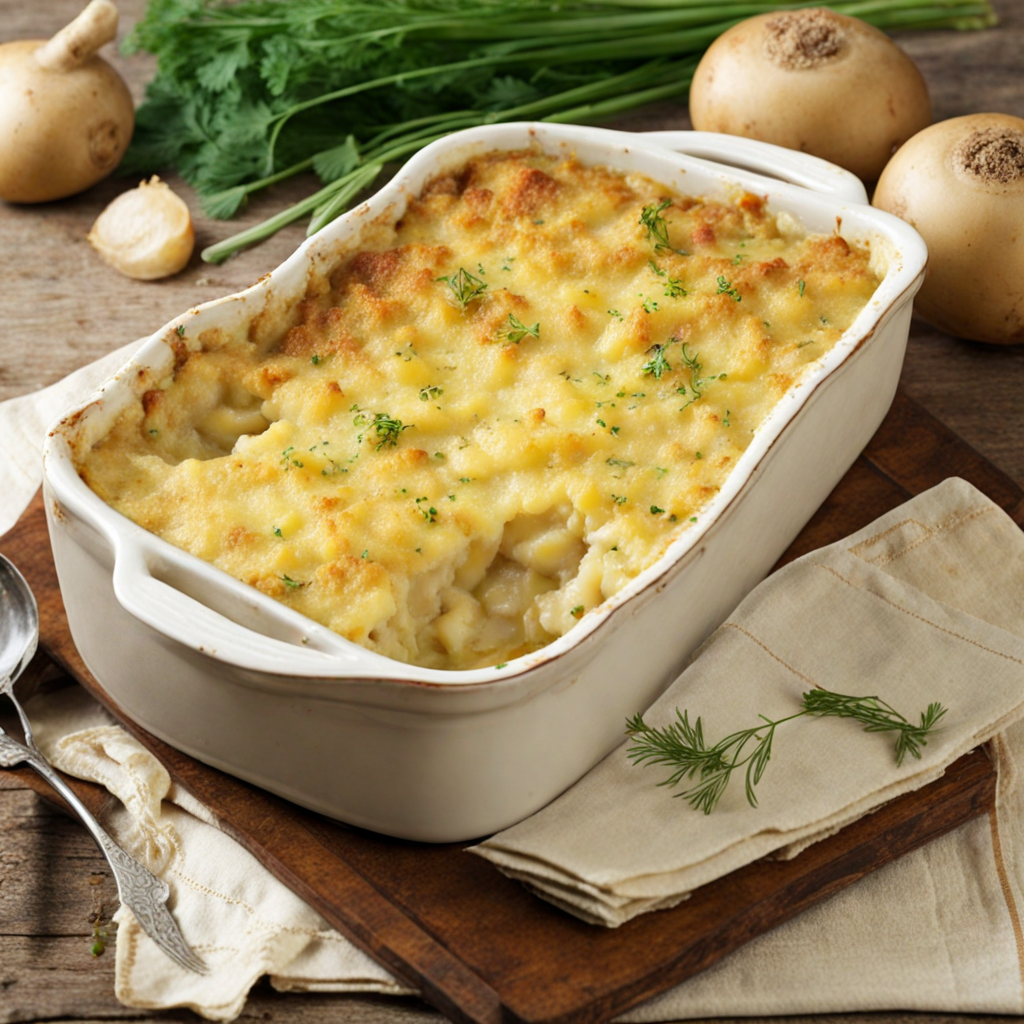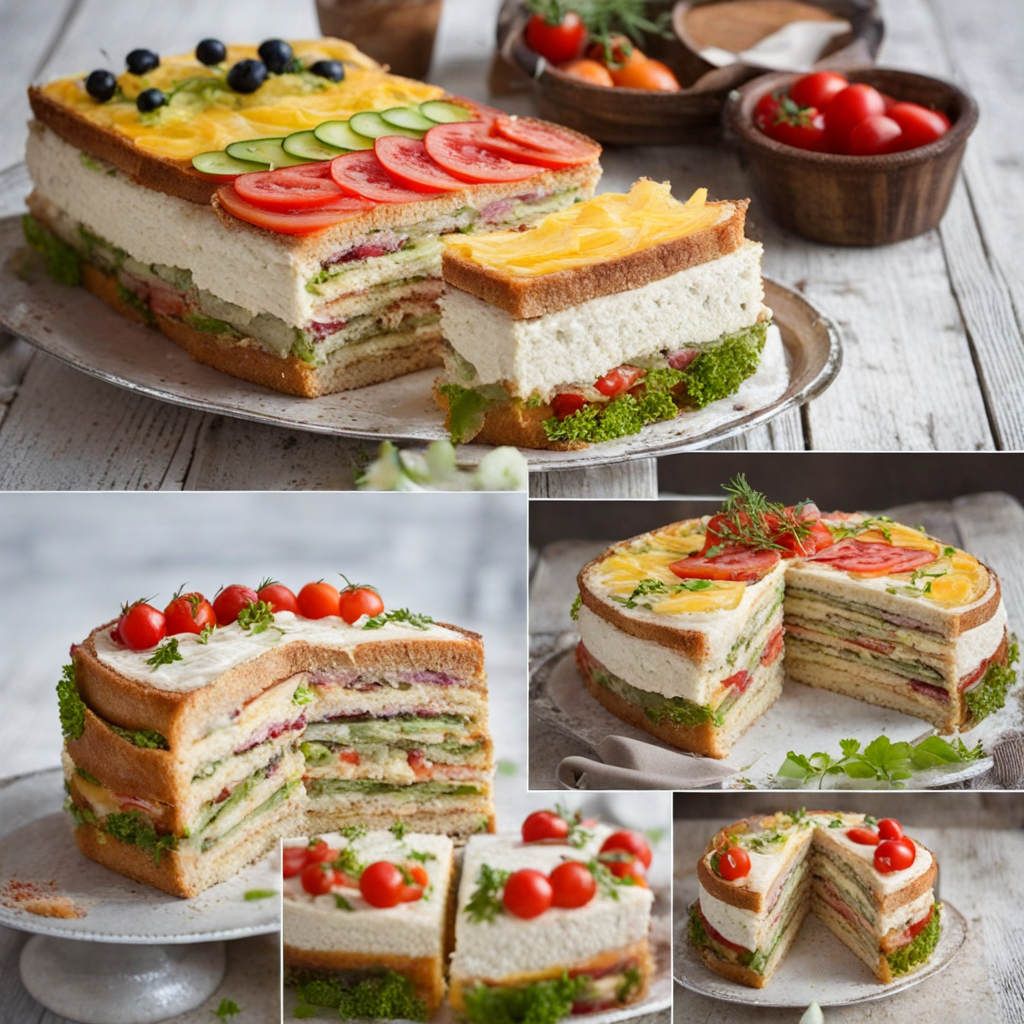Princess Cake
Princess Cake, or "Prinsesstårta," is a delightful Swedish dessert that captivates the senses with its vibrant appearance and rich flavors. This enchanting cake is typically composed of multiple layers, starting with a light and fluffy sponge cake known as "genoa." The sponge is often filled with a luscious layer of raspberry jam and a generous spread of velvety pastry cream, creating a harmonious blend of sweetness and tartness that dances on the palate. The cake is then enveloped in a smooth layer of marzipan, which adds a subtle almond flavor that perfectly complements the other elements. Visually, Princess Cake is a feast for the eyes. It is typically adorned with a pale green marzipan coating, giving it a regal appearance that is often topped with a delicate rosette of whipped cream and a marzipan rose. The use of vibrant colors, especially the pastel green, makes it a popular choice for celebrations such as birthdays and festive occasions. Each slice reveals a beautiful cross-section of layers, enticing both the eye and the taste buds with its promise of a delightful experience. What truly sets Princess Cake apart is its balance of textures and flavors. The spongy cake provides a lightness that is beautifully contrasted by the creamy filling and the chewy marzipan. As you take a bite, the layers meld together, creating a symphony of flavors that is both nostalgic and refreshing. This traditional Swedish treat not only satisfies a sweet tooth but also invites you to indulge in a piece of culture, making it a must-try for anyone looking to explore new culinary delights.
How It Became This Dish
The Sweet Legacy of Prinsesstårta: A Journey Through Swedish Culinary History Origins of Prinsesstårta Prinsesstårta, a delightful Swedish cake, translates literally to "Princess Cake." Its origins can be traced back to the early 20th century, specifically to the 1930s in Sweden. The cake is often associated with the Swedish royal family, which adds to its charm and cultural significance. The creation of Prinsesstårta is credited to the well-known Swedish pastry chef Jenny Åkerström, who was tasked with preparing cakes for the daughters of Prince Carl, Duke of Västergötland. These daughters, known as the "princesses," inspired the name of the cake. The cake itself is a luscious layered confection, typically comprising a light sponge cake (often a variant of genoise) filled with a rich blend of pastry cream and raspberry jam. The layers are encased in a smooth, verdant layer of marzipan, which gives the cake its distinctive appearance and flavor. Topped with a simple dusting of powdered sugar and often adorned with a single marzipan rose, Prinsesstårta is not only a feast for the taste buds but also a visual delight. Cultural Significance Prinsesstårta holds a special place in Swedish culture, often served at significant life events such as birthdays, weddings, and Christmas. It is particularly popular for celebrations where a touch of elegance is desired. The cake's connection to the royal family enhances its allure, making it a symbol of Swedish tradition and craftsmanship. The cake is more than just a dessert; it embodies the essence of Swedish fika—an important cultural practice that emphasizes taking a break to enjoy coffee and pastries with friends and family. During fika, Prinsesstårta often takes center stage, inviting conversations and connections among those gathered. Over the decades, it has become a beloved staple in Swedish bakeries and homes, representing hospitality and warmth. Development Over Time While the original version of Prinsesstårta remained relatively unchanged for many years, the cake has undergone various adaptations and interpretations since its inception. As the cake gained popularity, it became a subject of culinary experimentation. Different regions in Sweden began to put their spin on the classic recipe, introducing variations in flavors, fillings, and even colors. The traditional green marzipan covering is perhaps the most recognizable feature of Prinsesstårta, but bakers have started to explore a wide array of colors to suit different occasions. For instance, pink or white marzipan may be used for weddings, while vibrant colors like blue or yellow can adorn cakes for birthday celebrations. These variations not only cater to personal preferences but also reflect the evolving nature of Swedish baking traditions in response to contemporary tastes. The rise of food photography and social media in the 21st century has further propelled the popularity of Prinsesstårta, making it a trendy choice among younger generations. As people share their own interpretations and creations online, the cake continues to evolve, incorporating modern techniques and ingredients while remaining true to its classic roots. A Symbol of Tradition and Innovation Despite the variations that have emerged, the essence of Prinsesstårta remains unchanged: a celebration of flavor and artistry. The balance of the light sponge, luscious cream, tart raspberry jam, and sweet marzipan creates a harmonious symphony that delights the palate. This cake not only serves as a treat but also tells the story of Swedish culture, hospitality, and the importance of family gatherings. Interestingly, Prinsesstårta has transcended its royal origins and become a staple in Swedish households across all social strata. While it may have once graced the tables of the elite, it is now enjoyed by people from all walks of life. The democratization of the cake signifies a broader acceptance and celebration of culinary traditions, allowing everyone to partake in the joy that Prinsesstårta brings. Prinsesstårta in the Global Context As globalization has influenced culinary trends worldwide, Prinsesstårta has also found its way beyond Sweden's borders. Swedish expatriates have introduced this beloved cake to various countries, where it has gained a following among those curious about Swedish cuisine. Bakeries in places like the United States, Canada, and the United Kingdom have started to include Prinsesstårta in their offerings, often adapting the recipe to suit local tastes or dietary preferences. In recent years, the cake has also made its mark in the realm of culinary competitions and food festivals, where it often garners attention for its exquisite appearance and delicious flavor. Such events have further solidified Prinsesstårta's status as a culinary icon, showcasing the artistry involved in crafting this Swedish classic. Conclusion: The Enduring Charm of Prinsesstårta In a world where culinary trends come and go, Prinsesstårta stands as a testament to the enduring nature of traditional foods. Its rich history, cultural significance, and ability to adapt over time speak to the heart of Swedish culinary heritage. The cake not only delights those who indulge in it but also serves as a reminder of the importance of tradition, family, and celebration. Whether enjoyed at a festive gathering, a simple fika, or as a treat for oneself, Prinsesstårta encapsulates the spirit of Swedish hospitality. Its journey from the royal kitchens to the tables of everyday Swedes illustrates the power of food to unite people and foster a sense of community. As we continue to celebrate the legacy of Prinsesstårta, we honor not only its royal origins but also the countless bakers who have kept its spirit alive through generations. This cake is more than just a sweet treat; it is a delicious slice of history that invites us all to partake in the joy of sharing and celebrating life’s special moments.
You may like
Discover local flavors from Sweden







